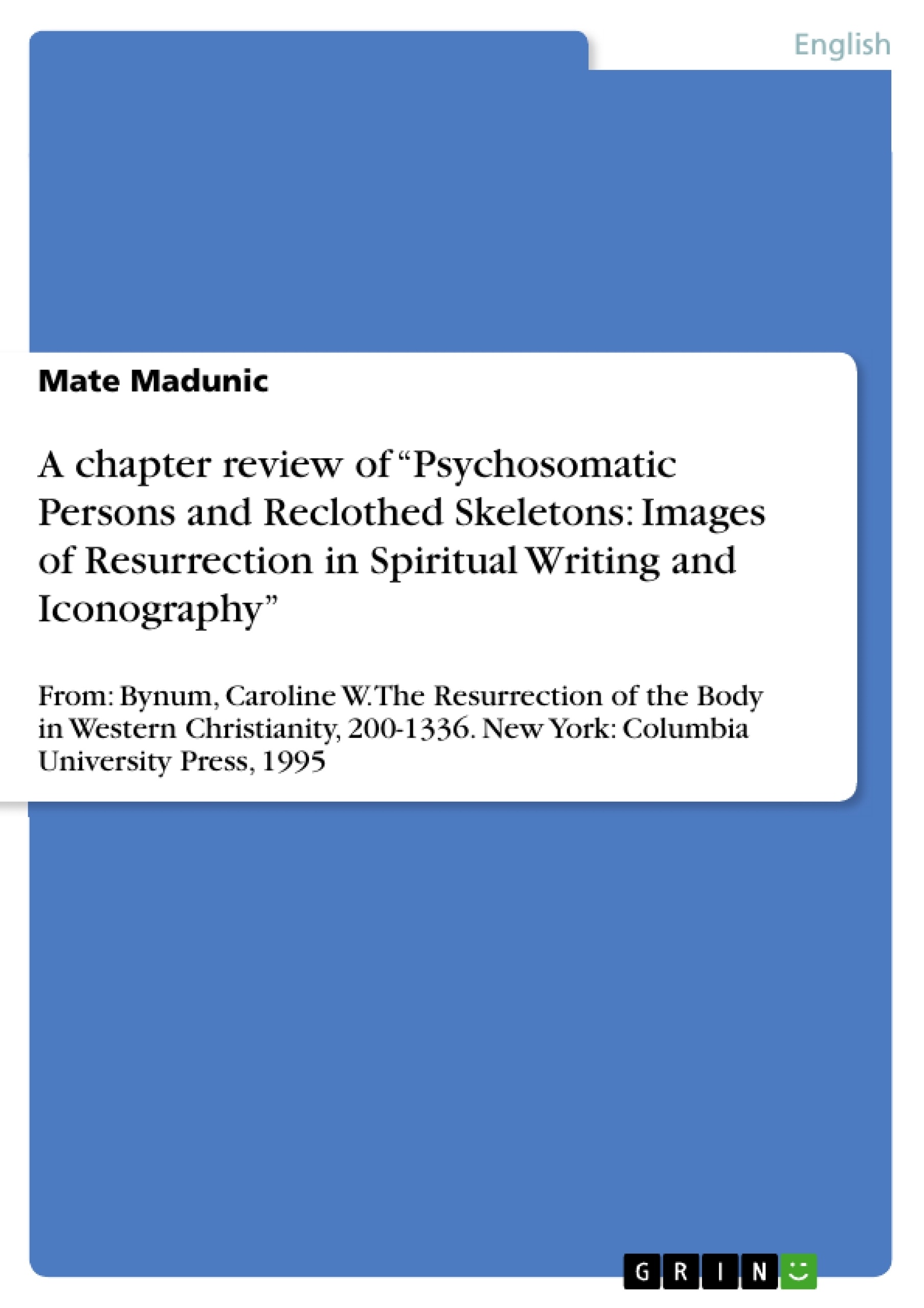The text is a review of a chapter taken from a scholarly book on the resurrection of the body in medieval belief.
Inhaltsverzeichnis (Table of Contents)
- Psychosomatic Persons and Reclothed Skeletons: Images of Resurrection in Spiritual Writing and Iconography
- The Two Resurrections: Soul and Body
- Hildegard of Bingen: Psychosomatic Unity and the Body's Transformation
- Cistercian Views: Bernard of Clairvaux, Hreman of Reun, William of St. Thierry, and Guerric of Igny
- Peter the Venerable: The Pauline Seed and the Fusion of Soul and Body
- Otto of Freising: A Double Mantle of Flesh and Spirit
- Iconography of the General Resurrection: From Early Christianity to the High Middle Ages
Zielsetzung und Themenschwerpunkte (Objectives and Key Themes)
This chapter examines the representations of resurrection in the High Middle Ages, drawing on spiritual writing and iconographic evidence. It explores how medieval writers and artists conceptualized the resurrection of the body, focusing on the beliefs and imagery surrounding this central doctrine of Western Christianity.
- The distinction between the resurrection of the soul and the resurrection of the body.
- The concept of the psychosomatic unity, viewing the person as an inseparable whole of body and soul.
- The role of imagery in representing the resurrection, including organic and inorganic metaphors.
- The different perspectives on the nature and appearance of the resurrected body.
- The symbolic significance of themes like decay, purification, and transformation in the context of resurrection.
Zusammenfassung der Kapitel (Chapter Summaries)
- The chapter begins by establishing the concept of two resurrections in medieval thought: the immediate resurrection of the soul after death and the final resurrection of the body at the end of time. The author argues that the belief in a literal resurrection of the body was firmly established in the Middle Ages.
- Focusing on the writings of Hildegard of Bingen, the author explores the idea of the resurrected body as a psychosomatic unity. Hildegard uses imagery of transformation (e.g., flowering plants) and reassemblage (e.g., bones coming together) to depict the resurrection process. She emphasizes the body's need for purification and transformation to achieve eternal blessedness.
- The chapter then contrasts Hildegard's approach with the perspectives of prominent Cistercian thinkers like Bernard of Clairvaux, Hreman of Reun, William of St. Thierry, and Guerric of Igny. While these writers also emphasize the importance of the body in the resurrection, they often employ more negative imagery, associating the body with decay and the need for purification. Bernard's imagery, for example, often depicts the body as "earth" and emphasizes the negative transformation it undergoes.
- The author discusses the writings of Peter the Venerable, a Cluniac abbot who utilizes the Pauline Seed metaphor to depict the fusion of body and soul in resurrection. Peter's imagery combines organic and inorganic elements, highlighting both the transformative nature of resurrection and the importance of material continuity.
- The chapter concludes by examining the iconography of the general resurrection in the High Middle Ages. It highlights the prevalence of imagery that depicts the resurrection as a reassemblage of the body, often incorporating themes of decay and purification. The author suggests that the symbolic language of resurrection reflects the medieval fear of corruption and the desire for redemption.
Schlüsselwörter (Keywords)
This chapter focuses on the concepts of resurrection, psychosomatic unity, imagery, transformation, decay, purification, and iconography in the context of medieval Western Christianity. It examines the different perspectives and representations of the resurrection of the body in spiritual writings and art, emphasizing the importance of this doctrine and its symbolic significance in medieval culture.
- Quote paper
- Mate Madunic (Author), 2005, A chapter review of “Psychosomatic Persons and Reclothed Skeletons: Images of Resurrection in Spiritual Writing and Iconography”, Munich, GRIN Verlag, https://www.grin.com/document/115348




